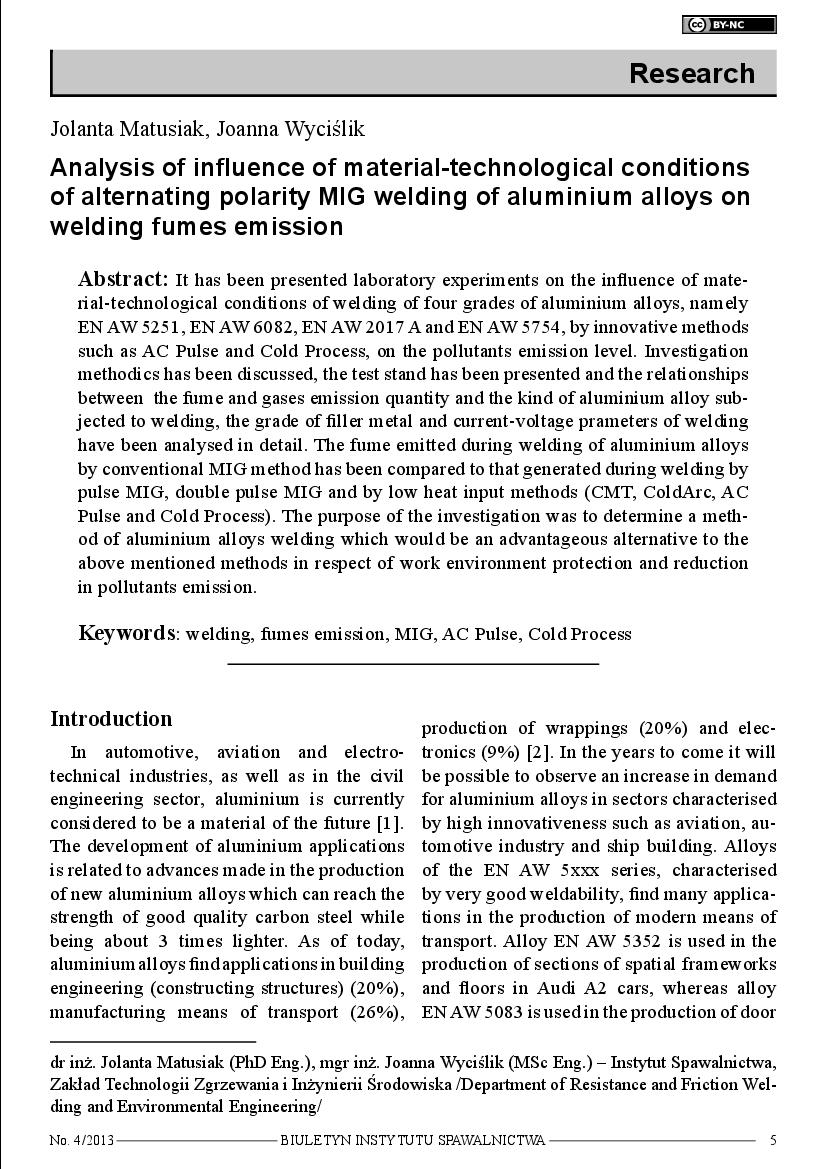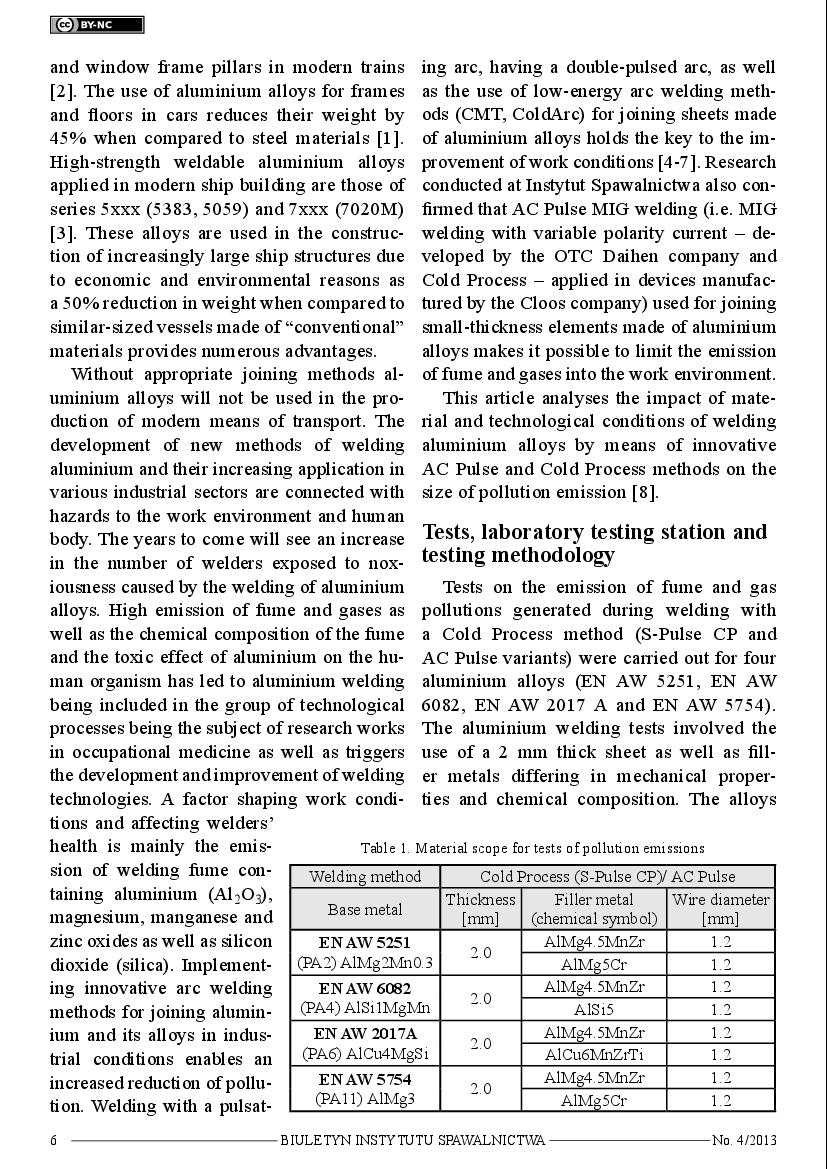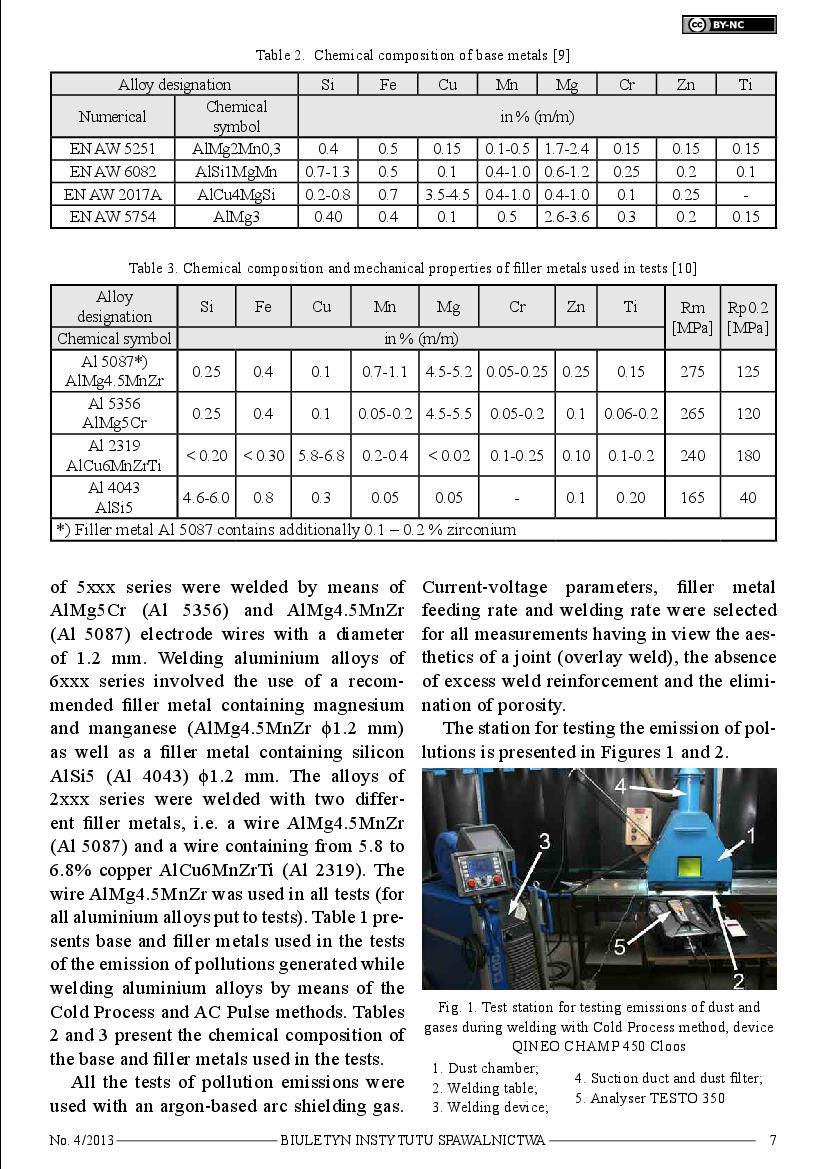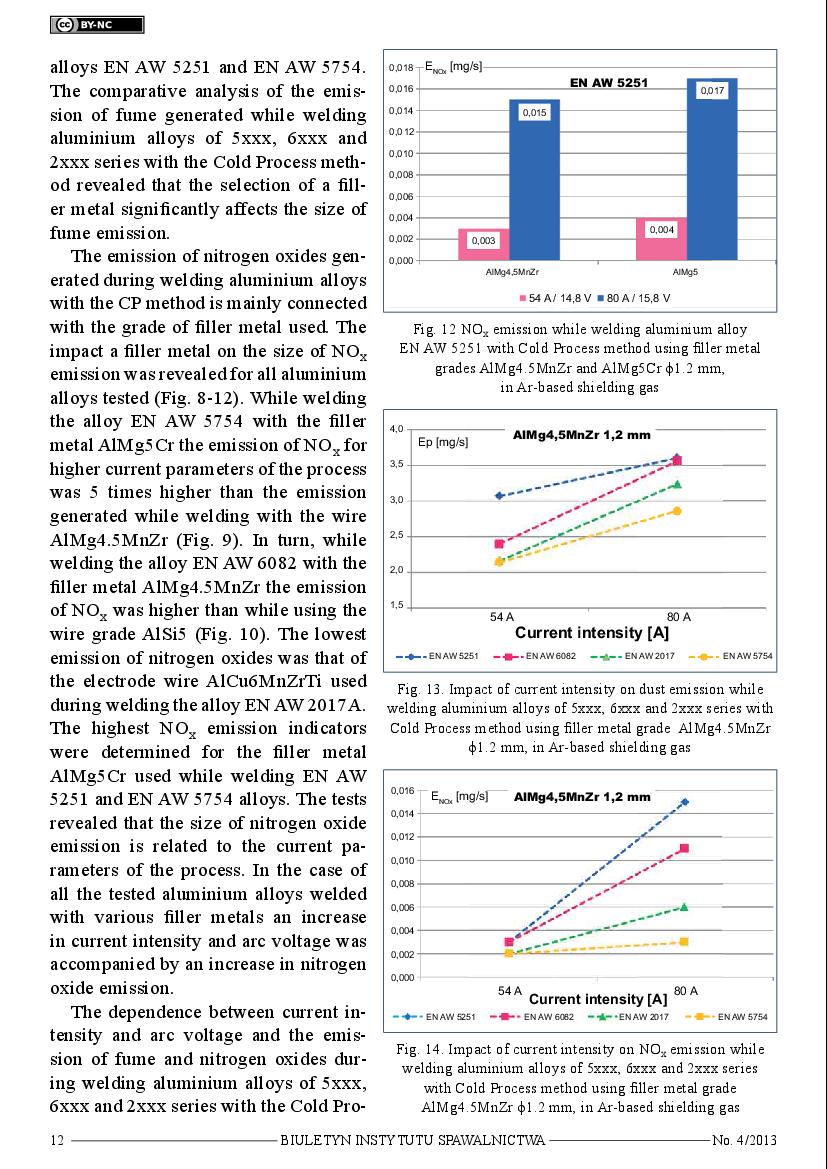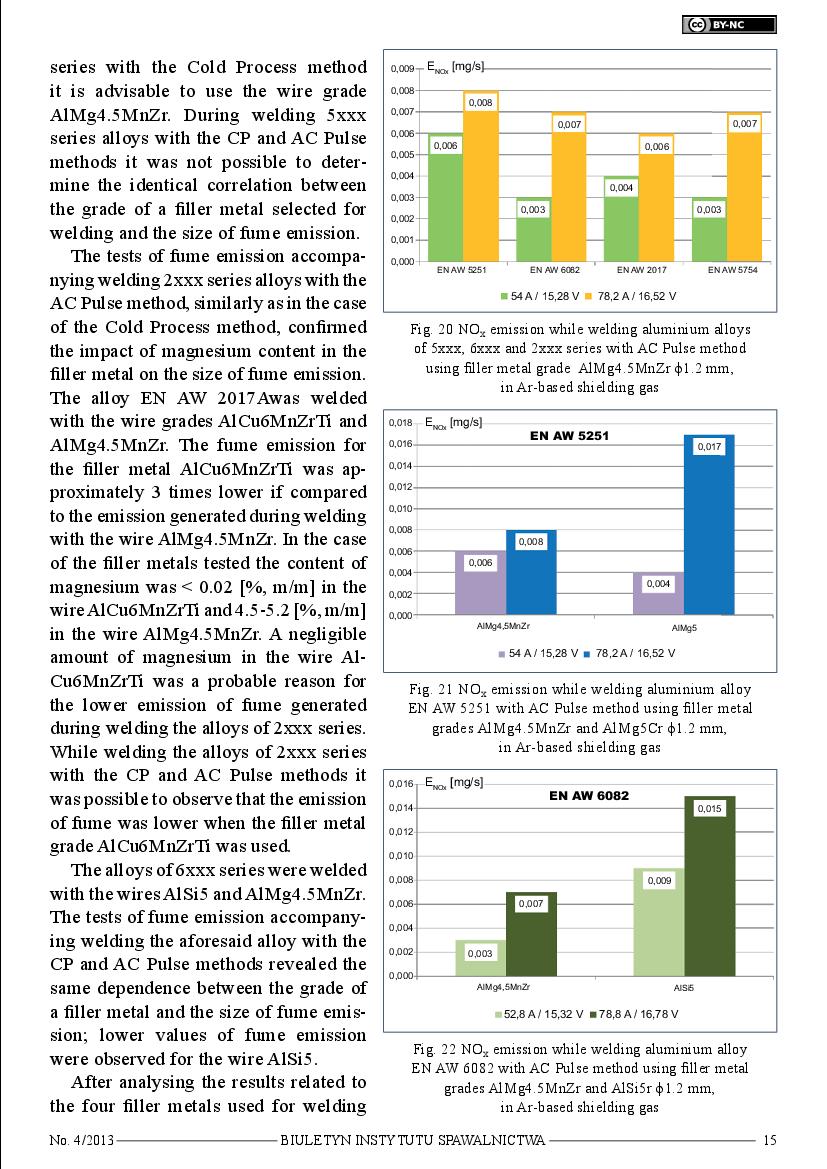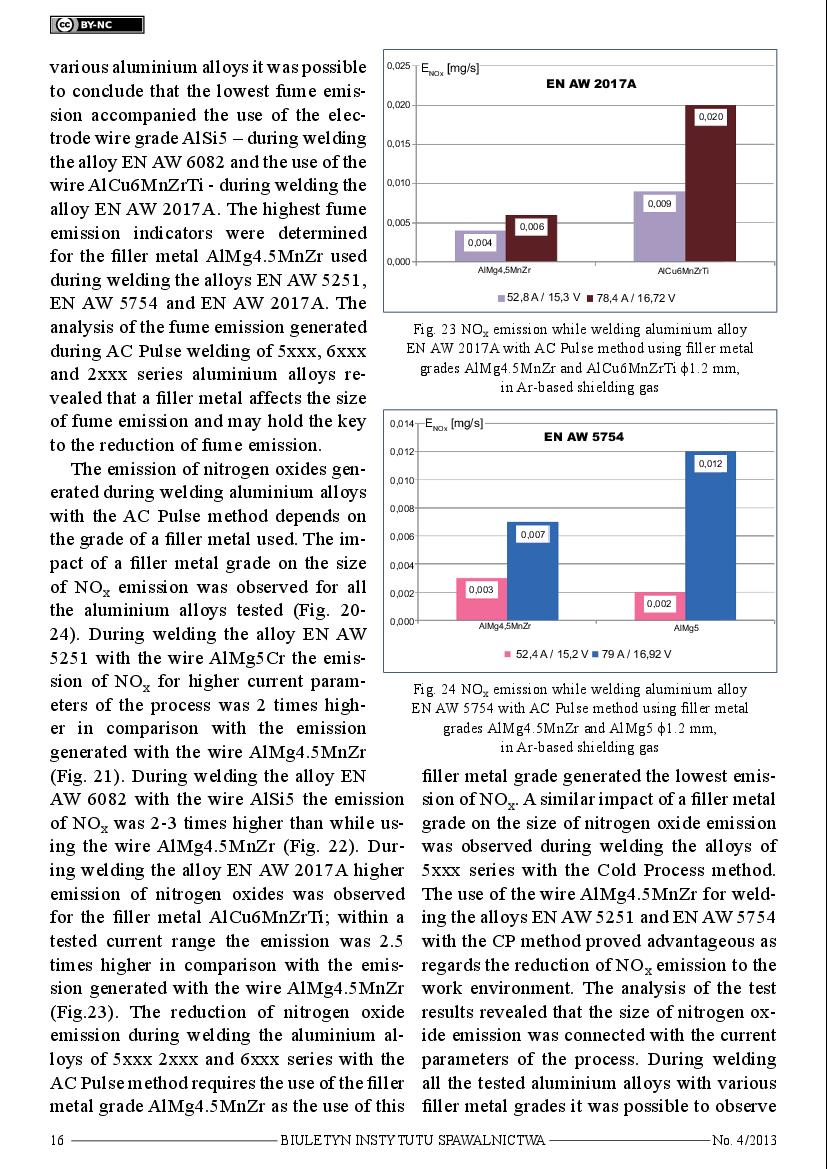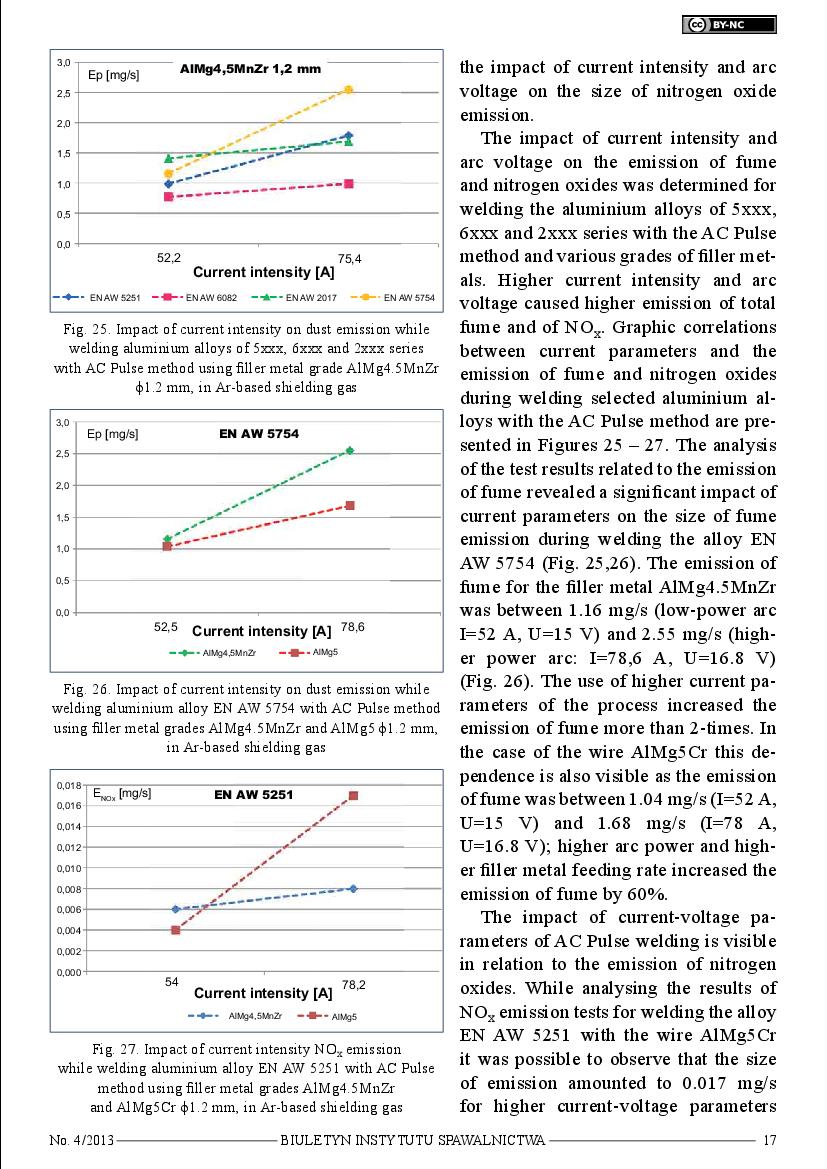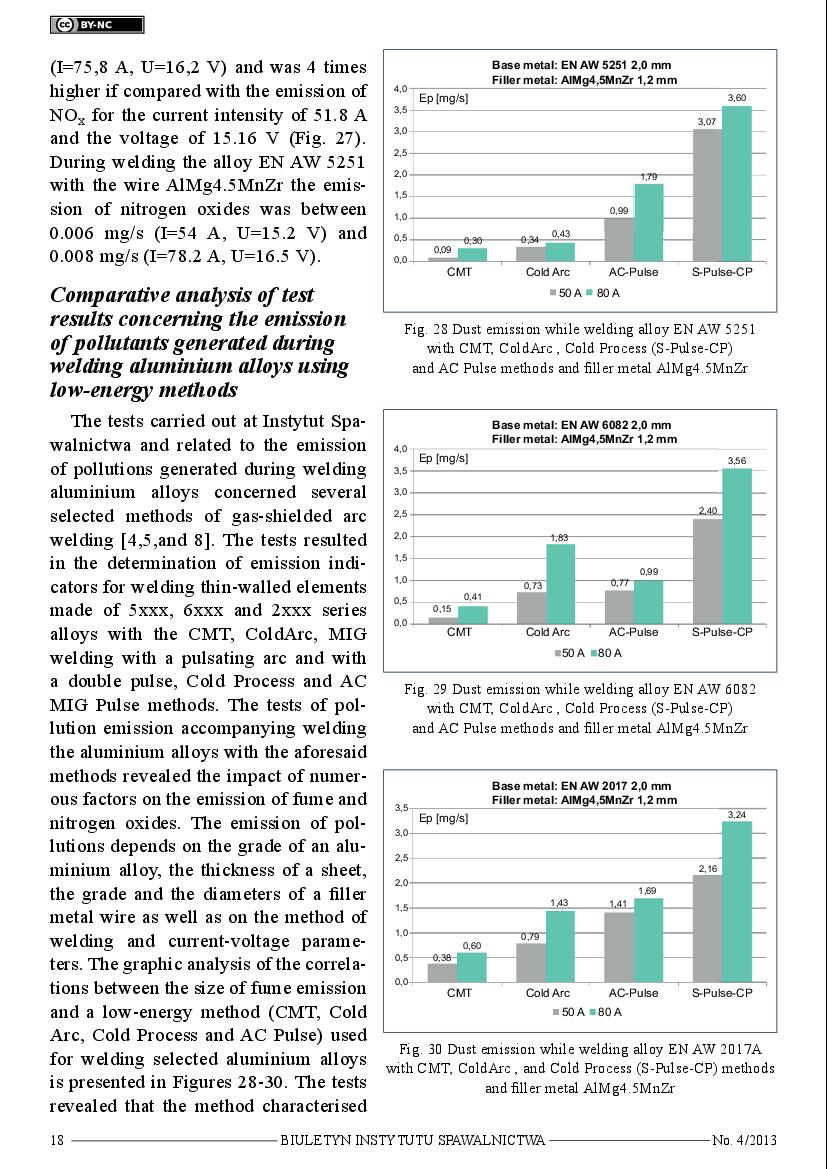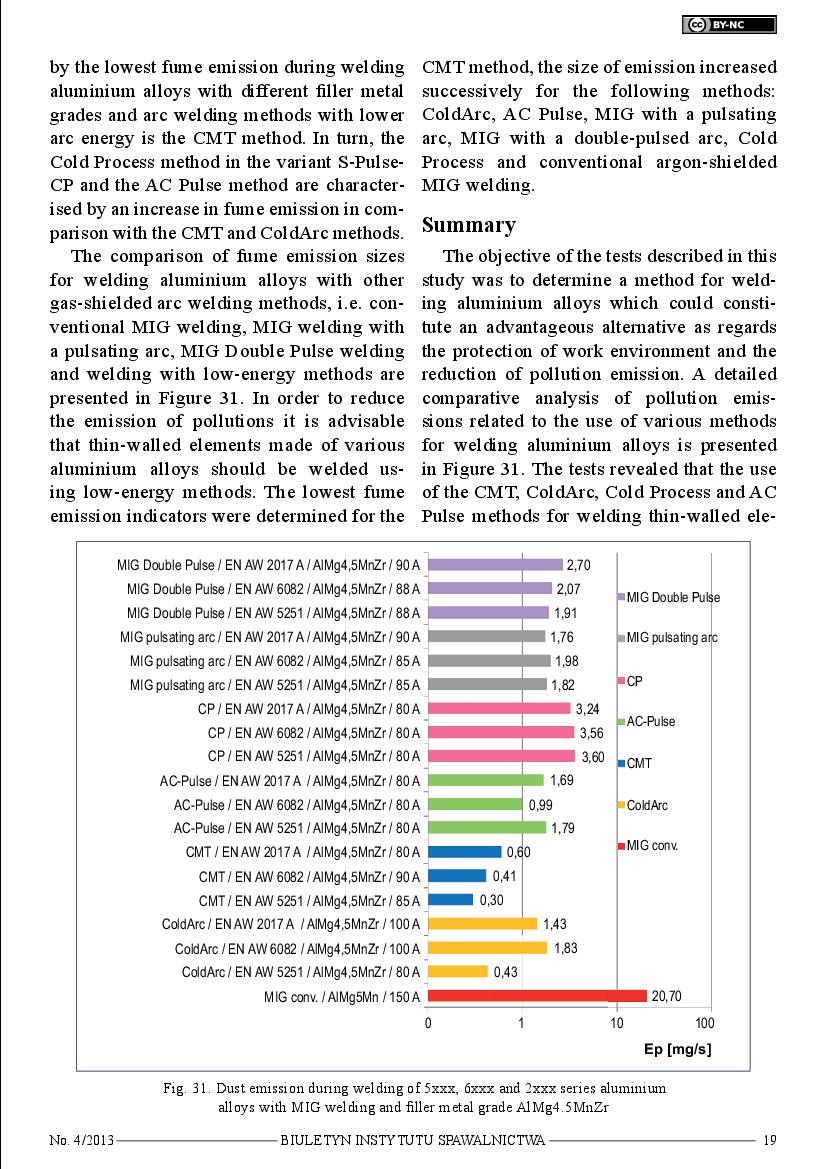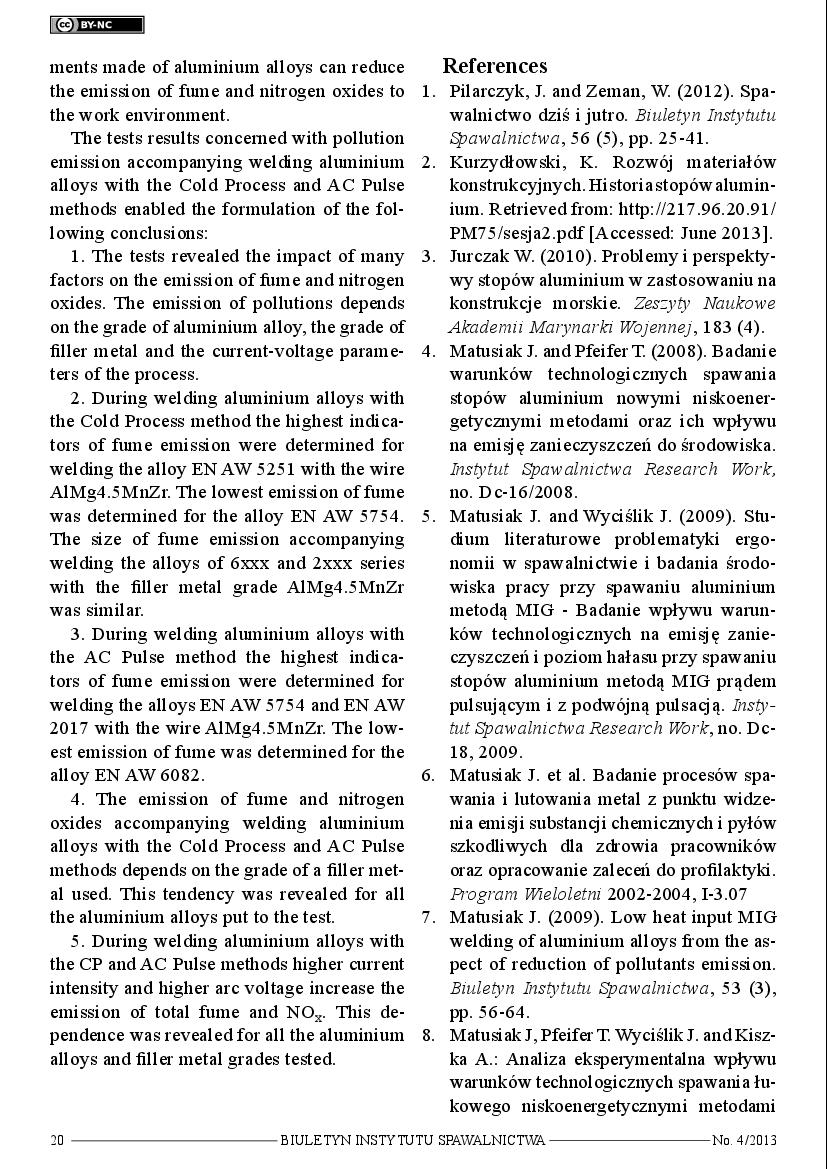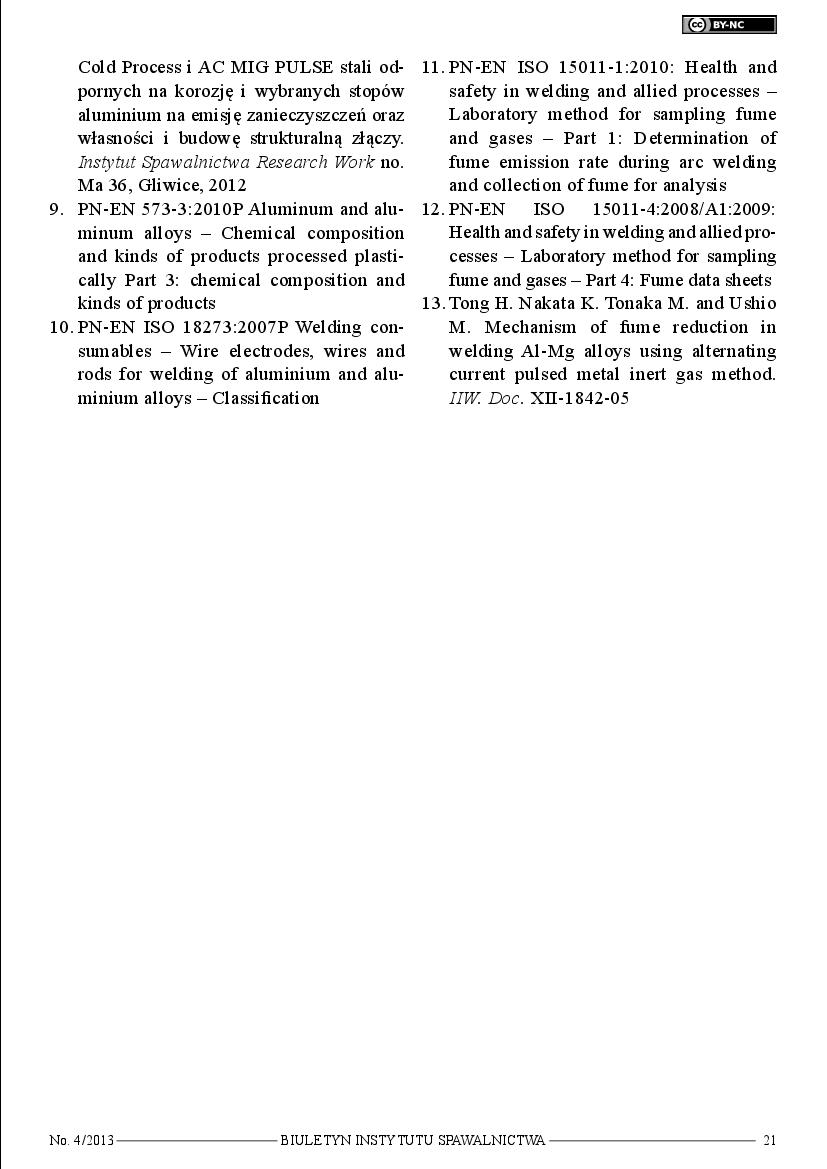Analysis of influence of material-technological conditions of alternating polarity MIG welding of aluminium alloys on welding fumes emission
It has been presented laboratory experiments on the influence of material-technological conditions of welding of four grades of aluminium alloys, namely EN AW 5251, EN AW 6082, EN AW 2017 A and EN AW 5754, by innovative methods such as AC Pulse and Cold Process, on the pollutants emission level. Investigation methodics has been discussed, the test stand has been presented and the relationships between the dust and gases emission quantity and the kind of aluminium alloy subjected to welding, the grade of filler metal and current-voltage prameters of welding have been analysed in detail. The dust emitted during welding of aluminium alloys by conventional MIG method has been compared to that generated during welding by pulse MIG, double pulse MIG and by low heat input methods (CMT, ColdArc, AC Pulse and Cold Process). The purpose of the investigation was to determine a method of aluminium alloys welding which would be an advantageous alternative to the above mentioned methods in respect of work environment protection and reduction in pollutants emission.
 1 / 17
1 / 17
 2 & 3 / 17
2 & 3 / 17
 4 & 5 / 17
4 & 5 / 17
 6 & 7 / 17
6 & 7 / 17
 8 & 9 / 17
8 & 9 / 17
 10 & 11 / 17
10 & 11 / 17
 12 & 13 / 17
12 & 13 / 17
 14 & 15 / 17
14 & 15 / 17
 16 & 17 / 17
16 & 17 / 17

